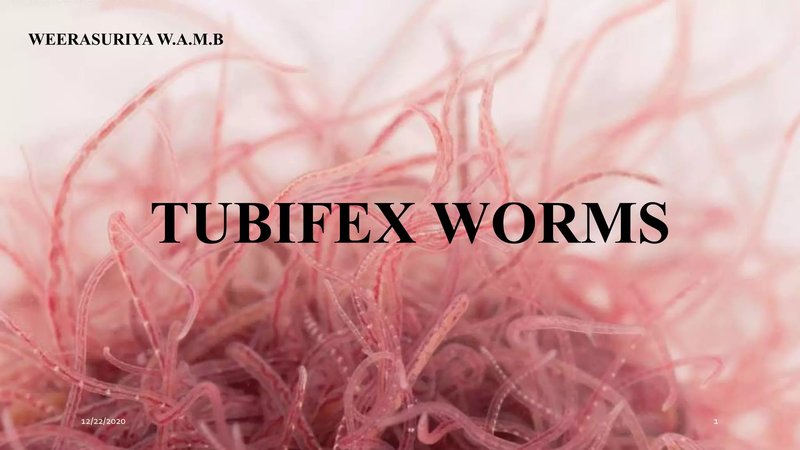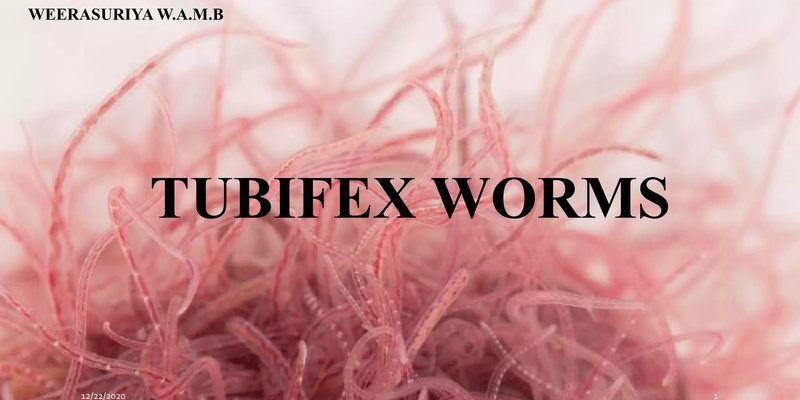
Using Tubifex worms isn’t just about watching something squirm in a dish; there’s real educational value here. They help illustrate concepts like habitat, food chains, and even the role of decomposers in our ecosystem. From exploring their biology to understanding their impact on the environment, these worms can play a crucial role in a classroom setting. So, let’s dive deeper into how to effectively use Tubifex worms in your school science demonstrations.
What Are Tubifex Worms?
Here’s the thing: Tubifex worms are aquatic worms commonly found in freshwater environments, especially in sediment and muddy areas. They belong to the family Tubificidae and are often mistaken for earthworms because of their similar appearance. However, Tubifex worms have a unique ability to thrive in low-oxygen conditions, which makes them fascinating study subjects.
These worms can grow up to about four inches long and are usually reddish-brown or reddish in color. If you’ve ever seen them in action, you’d know they can often be found writhing together in thick masses. Honestly, watching them move can spark curiosity about their behavior and biological functions, making them perfect for demonstrations.
Why Use Tubifex Worms in the Classroom? Well, these worms are not just fun to observe; they also serve as great educational tools. For example, they can demonstrate how organisms adapt to their environments. When you explain how Tubifex worms can survive in low-oxygen regions, students can connect this adaptability to broader biological concepts, such as evolution and survival of the fittest.
Benefits of Using Tubifex Worms
Using Tubifex worms in science demonstrations has several benefits that make them an attractive choice for educators.
- Engagement: Students often find live organisms more engaging than static images or diagrams. Watching them move can spark questions and discussions.
- Hands-On Learning: Interacting with live specimens allows students to learn through exploration. They can touch, observe, and draw conclusions themselves.
- Versatile Teaching Topics: Tubifex worms can be used in various lessons—from ecology and anatomy to environmental science. This versatility means you’ll get a lot of educational mileage out of these little creatures.
Another key benefit is their role in the ecosystem. Let’s say you’re teaching about food chains. You can use Tubifex worms to show how they serve as a food source for fish, birds, and other animals. This opens up conversations about energy transfer in ecosystems, which is vital for understanding our environment.
Setting Up Your Worm Demonstration
Getting started with Tubifex worms is easier than you might think. Here’s a simple step-by-step guide to help you set up:
1. Gather Supplies: You’ll need a glass aquarium or tank, clean water, a temperature regulator, substrate materials (like mud or sand), and of course, your Tubifex worms.
2. Fill the Tank: Add a couple of inches of substrate to the bottom of your tank, then fill it with water. Make sure the water is dechlorinated and at a suitable temperature for the worms, typically between 65°F and 75°F.
3. Introduce the Worms: Once your tank is ready, gently introduce the Tubifex worms. It’s important to give them time to settle in and acclimate to their new environment before starting your demonstrations.
4. Maintenance: Keep an eye on the water quality, and change it as needed. Tubifex worms thrive in clean conditions, so removing waste and uneaten food is crucial.
Having a well-maintained tank ensures that students see healthy, active worms, which enhances their learning experience.
Conducting Engaging Activities
Now that your setup is complete, it’s time to engage your students with some interactive activities. Here are a few ideas that can help illustrate different biological concepts:
1. Observe and Record
Have students observe the Tubifex worms for a set period. Encourage them to take notes on their movements, behaviors, and interactions. You can even ask questions like, “What happens when the light turns on?” or “How do the worms react to being disturbed?” This exercise promotes critical thinking and scientific observation skills.
2. Create a Food Chain
Using the worms, discuss their role in the food chain. You can create a visual food web on a whiteboard, connecting Tubifex worms to their predators like fish. This activity helps students understand the interconnectedness of ecosystems.
3. Experiment with Conditions
Set up different environments in separate tanks or sections of the same tank. For instance, you can create low-oxygen and high-oxygen areas and observe how the Tubifex worms behave in each. This experiment can lead to discussions about adaptations and survival strategies in different environments.
By incorporating these activities, you enrich the learning experience and give students a hands-on understanding of complex biological concepts.
Common Challenges and Troubleshooting
Even with the best intentions, things can sometimes go awry. Here are some common challenges you might face when using Tubifex worms in demonstrations and how to tackle them:
- Water Quality Issues: If the tank water becomes cloudy or foul-smelling, it’s time to change it. Poor water quality can stress the worms and affect their behavior.
- Temperature Fluctuations: Ensure the temperature remains consistent. Sudden changes in temperature can shock the worms.
- Student Interactions: If students are too rough, it could harm the worms. Remind them to handle the specimens gently and respectfully.
Addressing these issues promptly will keep your demonstration running smoothly and your students engaged.
Using Tubifex worms in school science demonstrations is not just entertaining; it’s a unique way to teach important biological principles. The live interactions can spark curiosity and deepen understanding of ecosystems, adaptation, and the role of decomposers in nature.
By setting up a tank, conducting engaging activities, and troubleshooting common challenges, you can create a learning environment that is both educational and memorable. So the next time you plan a science lesson, think about giving Tubifex worms a chance. They might just wiggly their way into your students’ hearts—and minds—creating a lasting impact on their learning journey.

